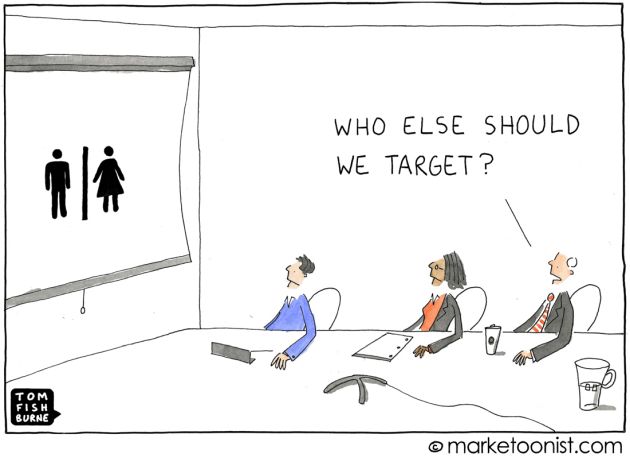Somebody was recently perplexed on LinkedIn about the kind of marketing adopted by a leading used cars portal:
Cold Calling was earlier done by telecallers. Now it’s done via pre-recorded messages. Lately, there has been a bombardment of such robocalls from this company. I’m not able to understand the strategy here. Not everyone is selling or buying old cars. Annoying the customer to the extent that they start raising complaints. What kind of marketing is this? Can someone explain?
This used car portal is worth more than a billion dollars and will go by “Unicorn Cars” for the reminder of this post.
Here’s a slightly edited version of my answer.
This is the good old “Spray-and-Pray” or “Throw Pasta on the Wall, Hope Something Sticks” marketing.
Although it uses demographics in an attempt to spin what it does, the marketing tactic essentially blasts the same message to everyone in the hope that someone bites.
It contrasts with the modern marketing tactic known as “Targeted Marketing”, “1 to 1 Marketing”, etc. In Targeted Marketing, the brand uses demographics, psychographics and other attributes to craft highly personalized messages to prospective consumers. As I wrote in Mastering Targeted Offers – The Uber Way, Uber is one company that has mastered this tactic.
If you Google “Spray and Pray”, you’ll find the overwhelming majority of results dunking on this tactic. So, is Targeted Marketing the Holy Grail?
Sadly, no. Because people don’t like Targeted Marketing either.
Empirically, people want targeted marketing but only until they get it. After that, they rant against targeted marketing.
The paradigmatic 21st century business model is probably giving a product away for free, or at least below cost, in order to collect data that can be used for lucrative targeted advertising. This is how most email works, and basically all of social media, and it has become such a staple of modern business thought. One problem with this model is that the better the data – the more intimate and valuable the information you collect about your customers – the more annoyed people will get if you use it. When the ads are too targeted, it’s creepy and people get angry. – Money Stuff by Matt Levine, 8 January 2024.
Those of you who have watched Social Dilemma will know that the famous Netflix documentary trashes targeted marketing.
On a side note, I see parallels to security where users want security, but only until they get it. See Why Do People Obsess Over Security And Then Make Payments Without A Password? for evidence.
Bottomline: People complain about both spray-and-pray and targeted marketing.
Obviously, marketers can’t eschew both styles of marketing.
 Spray-and-Pray is du jour in credit card, insurance, timeshare, and a few other industries. Because it tends to work.
Spray-and-Pray is du jour in credit card, insurance, timeshare, and a few other industries. Because it tends to work.
Let’s see how.
Spray-and-Pray is based on the following principle:
He who is inside the Target Group likes the call. He who is outside the Target Group gets annoyed by the call.
So, the marketer uses response to the call to qualify prospects.
If the receiver of the call responds positively – or not negatively – add him or her to your Target Group. If not, move on to the next telephone number on the list. Rinse and repeat.
What’s left unsaid in spray-and-pray marketing is that the brand does not care what the guy outside the Target Group thinks. While that might sound callous, the behavior does not have any adverse impact on the business, at least in the short term.
But it triggers the following obvious question: “What if people who are outside the target group now enter the brand’s target group in future? Won’t they have a negative brand image of Unicorn Cars because they were annoyed with its robocalls?”
This is a good point except that most people have short memories. When they start the purchase journey anew after a few months / years, they’d have forgotten about the irritation they faced with the brand before. Or, at least, that’s what spray-and-pray maxis tend to believe and, in my personal experience, they’re right more often than not in practice.
Then there’s the multiplier effect. For every guy who rants on social media about annoying robocalls from a brand, there’s another guy who hears about the brand for the first time from the same rants. Since these people have not experienced those robocalls themselves, they only register the brand name, which is a good thing.
When media is cheap, attention is costly and even bad publicity can be good publicity! This is also somewhat like the conspiracy theory about why Starbucks makes typos with customer names!
Classic case of #FeatureOrBug: "Starbucks misspells names on purpose to trick customers into giving them free advertising. The more ridiculous the botched name, the more likely consumers are to share a photo on social media." – via @mental_floss https://t.co/dGhWHOlDjK
— Ketharaman Swaminathan (@s_ketharaman) January 11, 2018
Therefore, contrary to what an average consumer thinks, Spray-and-Pray often delivers good enough Return on Marketing Investment without tarnishing the brand image too much.
That said, spray-and-pray always violates anti-spam laws and attracts hefty fines.
Millions of Brits received cold calls despite being registered on DND. About 0.02% of them complained to the country’s data watch dog Information Commissioner’s Office. ICO slapped six figure fines on the three errant telemarketers.
This is not legal advice but, if you’re running a campaign targeted at western markets, please refrain from spray-and-pray marketing. While it may not hurt your marketing budget, spray-and-pray will elevate your lawyer’s fees!

